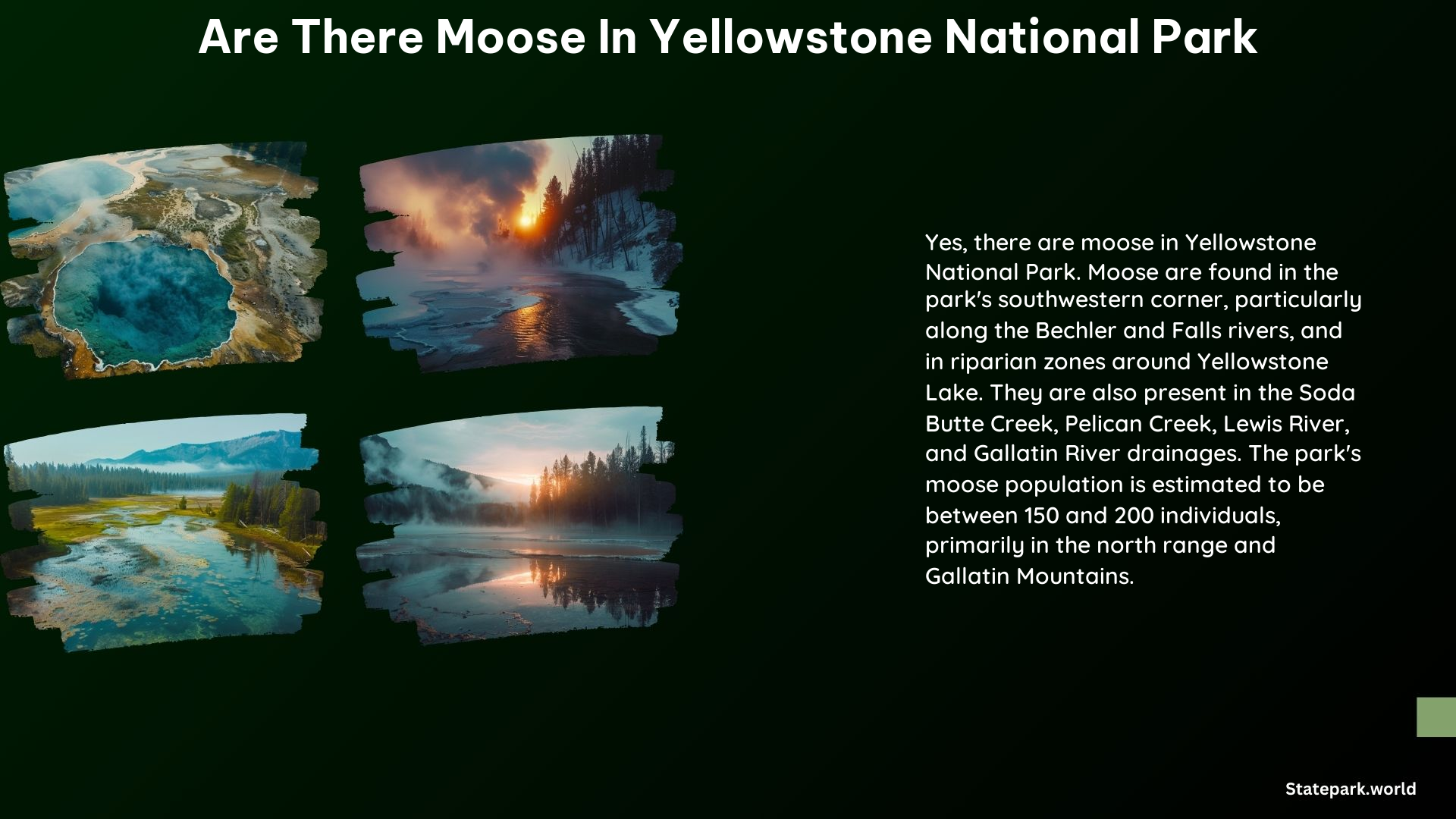Yes, there are moose in Yellowstone National Park. Moose are found in the park’s southwestern corner, particularly along the Bechler and Falls rivers, in the riparian zones around Yellowstone Lake, and in the Soda Butte Creek area. They are also present in the Gallatin Mountain Range, Tower Area, Pebble Creek, and the northwest corner of the park. Moose are known to inhabit areas with abundant willow, cottonwood, and aspen trees, as well as beaver ponds and wetlands.
Habitat and Behavior
Moose are browsers, preferring the leaves, buds, and barks of trees and shrubs, particularly willow, cottonwood, and aspen. They are also known to eat aquatic plants in ponds and rivers. Moose are good swimmers and can move through deep snow and water due to their long legs and unique knee joints. They are most active during cooler parts of the day, especially in the early morning and late afternoon, as they tend to overheat in warmer conditions.
Population and Conservation

The moose population in Yellowstone is estimated to be between 150 and 200 in the north range and Gallatin Mountains. Moose numbers are declining in the Northern Rockies and Yellowstone, with suspected causes including predation by wolves, climate change, and habitat loss.
Tips for Spotting Moose
- Look for moose in areas with abundant willow, cottonwood, and aspen trees, as well as beaver ponds and wetlands.
- Be patient and observe during cooler parts of the day, especially in the early morning and late afternoon.
- Keep an eye out for moose in the southwestern corner of the park, particularly along the Bechler and Falls rivers, in the riparian zones around Yellowstone Lake, and in the Soda Butte Creek area.
Safety Precautions
Moose, especially cows with calves, can be unpredictable and aggressive if they feel threatened. Keep a safe distance and avoid approaching them.
Additional Facts about Moose in Yellowstone
- Moose are the largest members of the deer family, with adult males (bulls) weighing up to 1,500 pounds and standing over 6 feet tall at the shoulder.
- Moose have a distinctive “bell” or flap of skin that hangs from their throat, which is more pronounced in males.
- Moose are solitary animals, with the exception of cows and their calves, which stay together for the first year of the calf’s life.
- Moose are excellent swimmers and can often be seen crossing rivers and lakes in Yellowstone.
- Moose are known to be aggressive, especially during the breeding season (September to October) and when protecting their young.
- Moose are susceptible to various diseases and parasites, including brainworm and winter ticks, which can contribute to population declines.
- Climate change is a significant threat to moose in Yellowstone, as warmer temperatures and reduced snowpack can negatively impact their habitat and food sources.
Conclusion
Yellowstone National Park is home to a population of moose, primarily in the southwestern corner of the park and the Gallatin Mountain Range. While their numbers are declining, visitors to Yellowstone have a chance to spot these majestic animals in their natural habitat, as long as they observe proper safety precautions. By understanding the habitat and behavior of moose, visitors can increase their chances of seeing these impressive creatures during their visit to Yellowstone.
References
- https://www.tripadvisor.com/ShowTopic-g60999-i481-k11790452-Where_to_find_moose_in_Yellowstone-Yellowstone_National_Park_Wyoming.html
- https://www.yellowstoneguidelines.com/whats-new/1485198504.html
- https://www.tetonscience.org/how-to-find-a-moose-in-grand-teton-and-yellowstone-national-parks/
- https://www.yellowstone.co/wildlife/moose.htm
- https://www.nps.gov/yell/learn/nature/moose.htm
